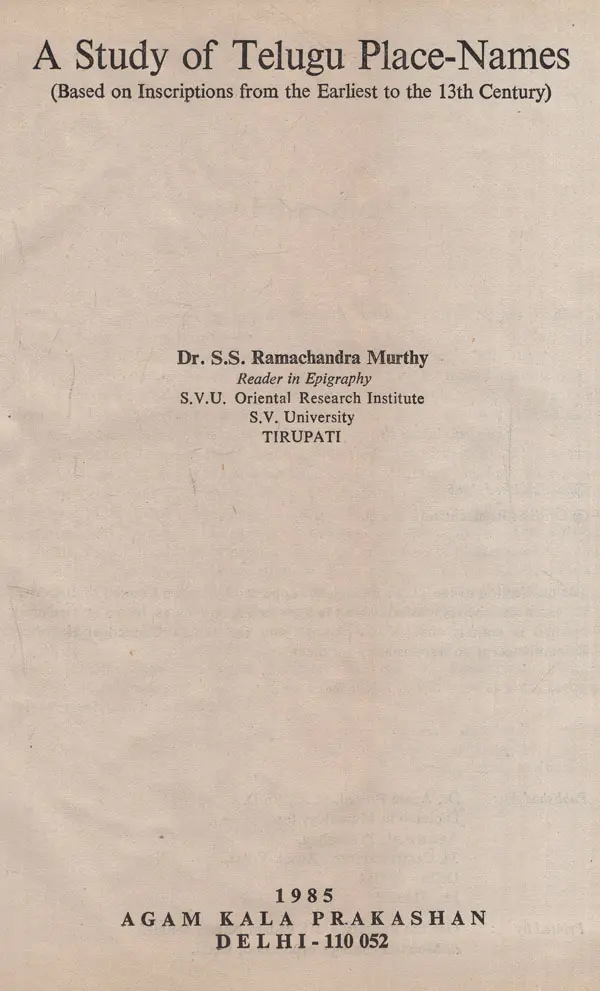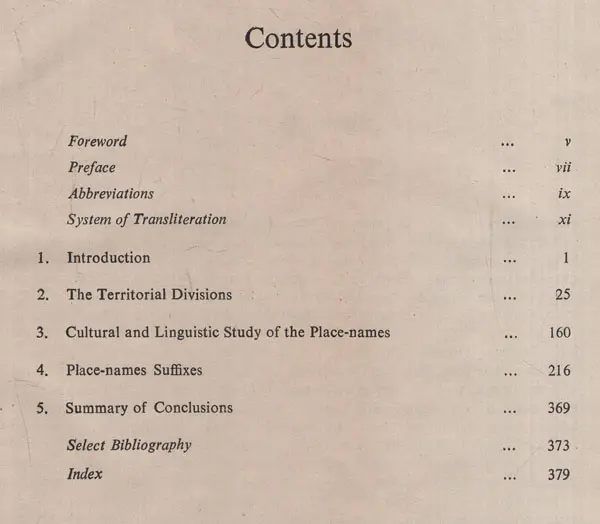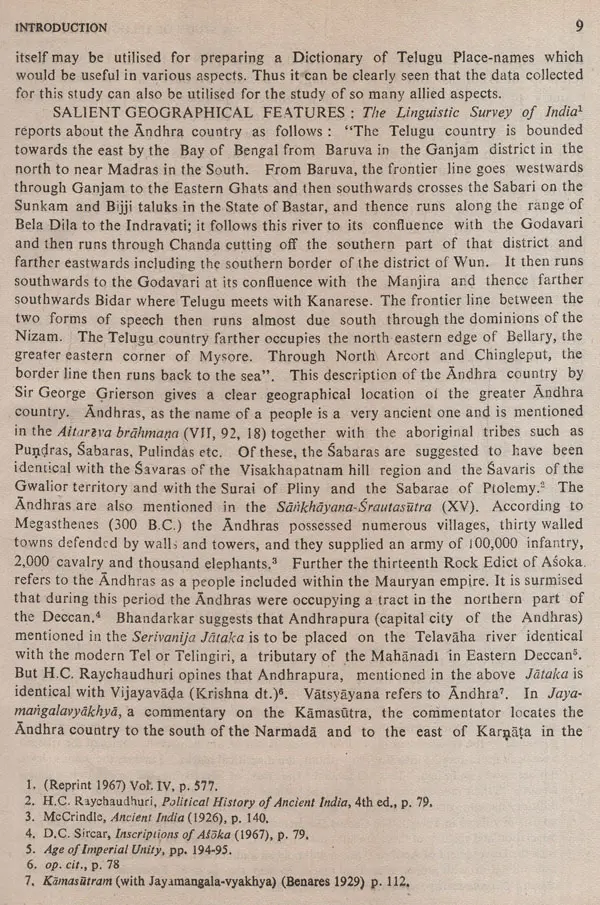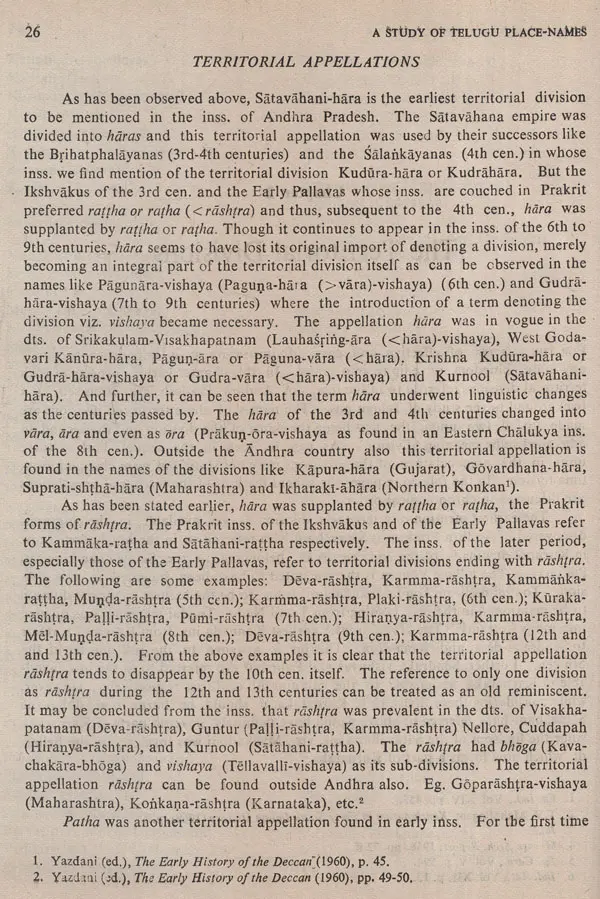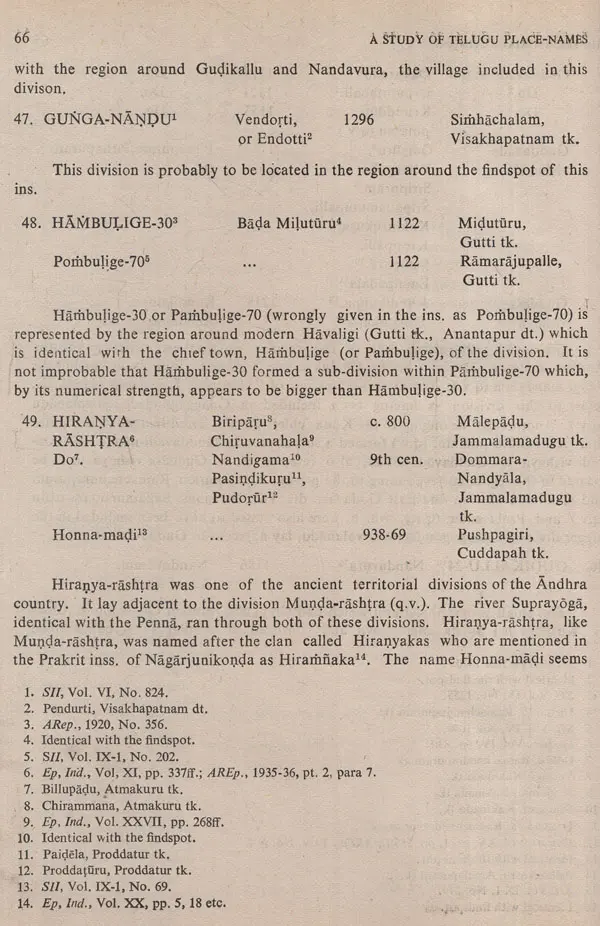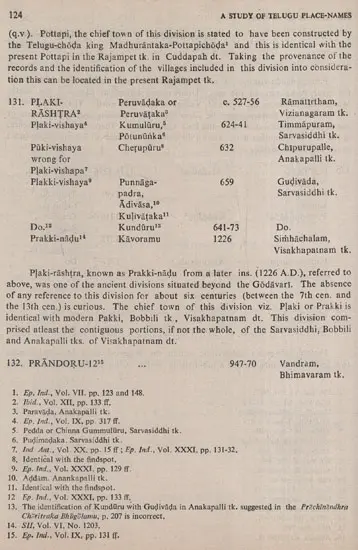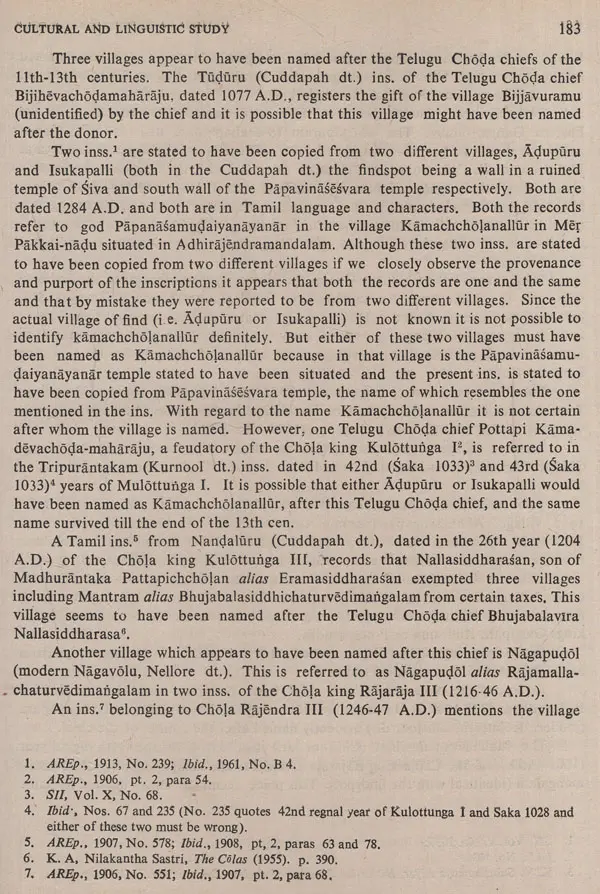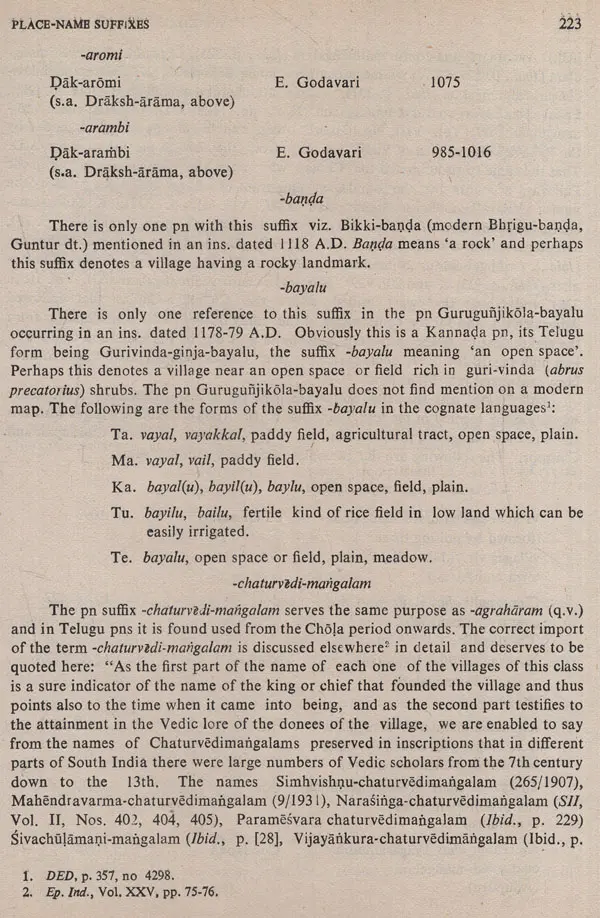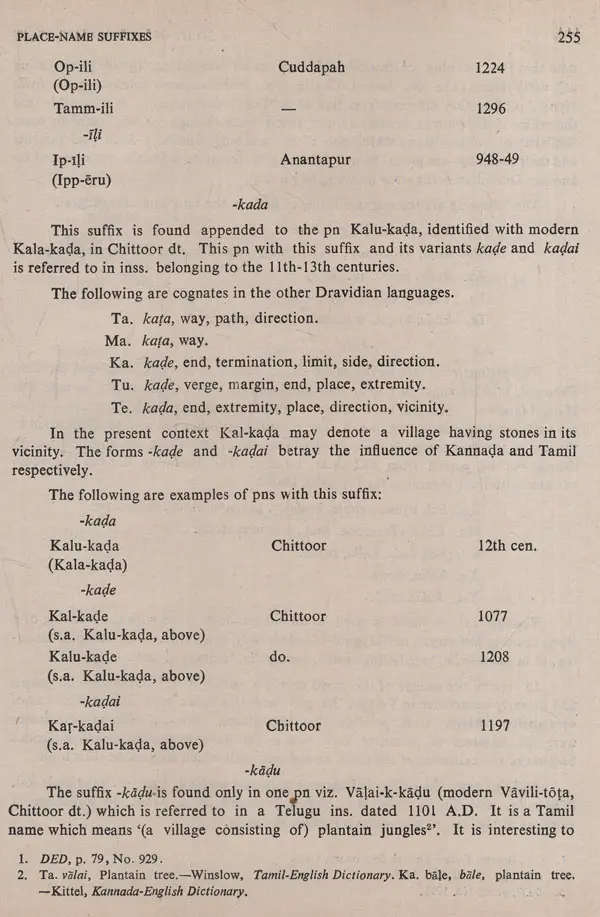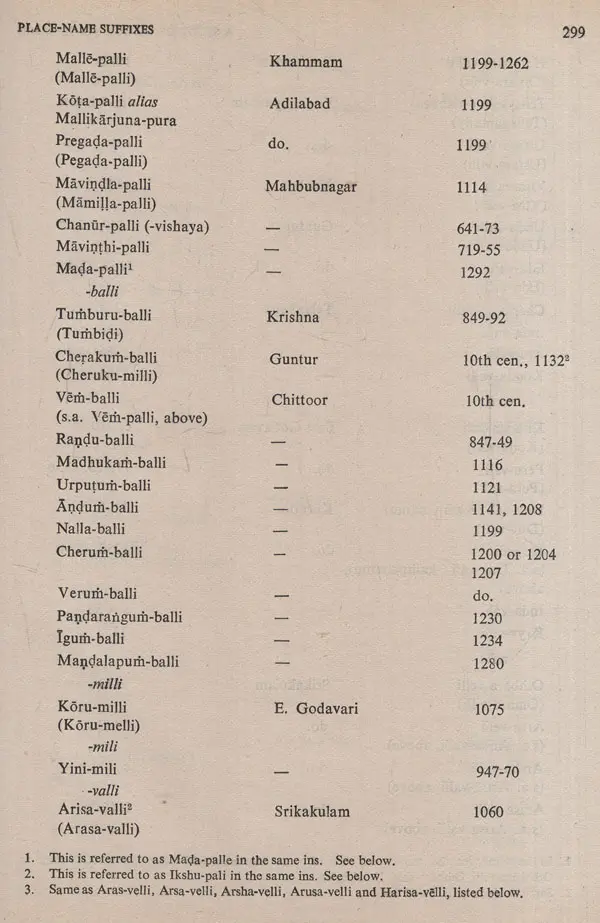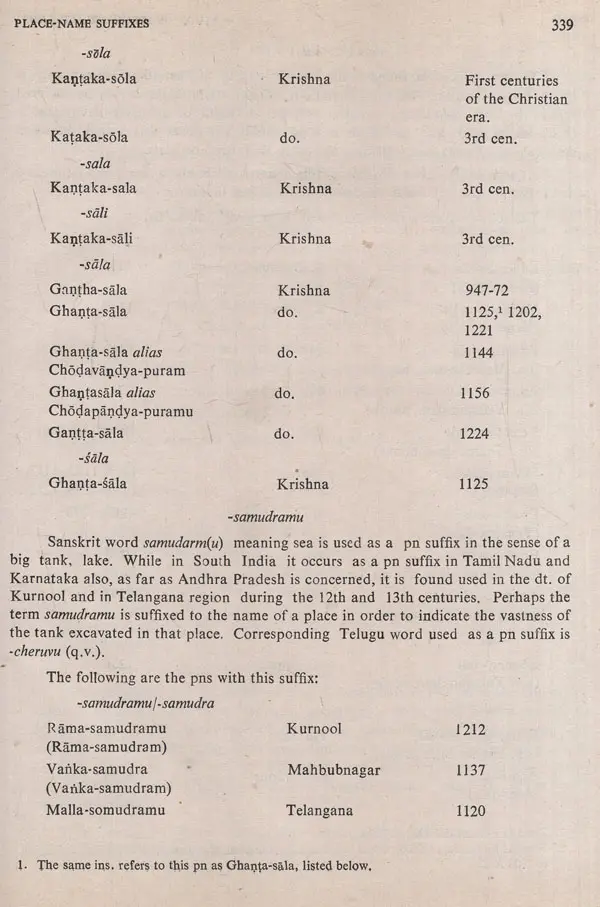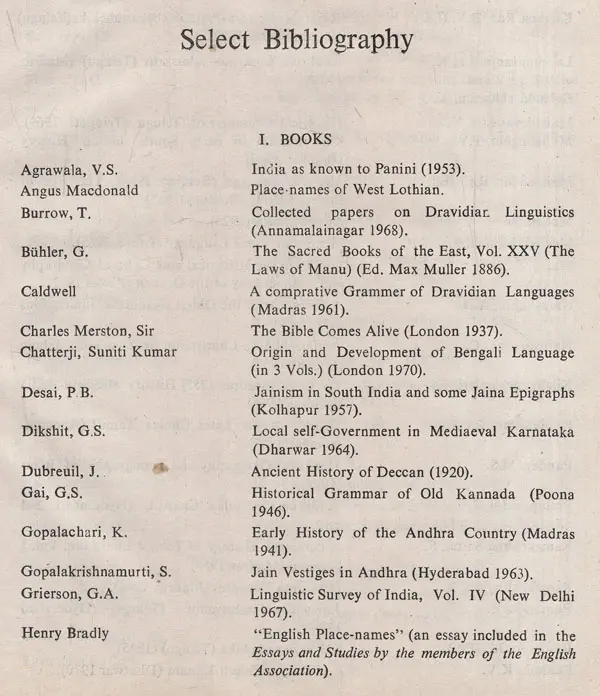About the Book The subject of Indian Place Names studies is becoming popular in academic circles though not many works are available in print. The present work of Dr. S.S. Ramachandra Murthy, based entirely on epigraphical data, is a scientific and historical study of Andhra Place names which is bound to serve as a trend-setter. This comprehensive work studies the evolution of place names, gives details about the early territorial divisions of the Andhra country and contains a cultural and linguistic study of place-names as well as a thorough analysis of place-name suffixes. The concluding chapter effectively summarizes the important results achieved through the meticulous study contained in the earlier chapters.
About the Author Dr. S.S. Ramachandra Murthy (b. 1939) joined the Epigraphy branch of the Archaeological Survey of India in 1965 and has ever since been engaged in epigraphical research. He has contributed a number of research papers for various volume seminars and journals. He was one of the Editors of ANANTARAGAM, a Felicitation brought out in honour of Dr. Rallapalli is in press. Anantakrishna Sarma. His book Andra Pradesh Devalaya Sasana Samikisha (in Telugu) is He is closely associated with the Epigraphical Society of India ever since its inception. For some time he was also on the Editorial Board of that society. He was also the Founder Secretary of the Place-names Society of India.
Dr. Murthy is presently working as Reader in Sri Venkateswara University, Epigraphy in Sri Tirupati.
Foreword I have great pleasure in introducing this work on Place Names studies by Dr. S.S. Ramachandra Murthy which is the first of its kind at least as far as the Dravidian region is concerned. While in many countries, particularly the west, the study of place and personal names has been going on for quite some time now, in India scholars have begun to evince interest in this subject only of late. The establishment of the Place Names Society of India in 1978 is sure to provide the necessary fillip for increased participation of academicians in this useful discipline.
In an ancient country like India, a scientific and historical study of Place names is bound to add immensely to our knowledge of the country's cultural history and this has been clearly substantiated by Dr. Ramachandra Murthy's praiseworthy exercise. More than anything else, he has proved beyond doubt that by studying the evolution and changes in Indian place names with the help of inscriptions, wherever available, we will be able to bring meaning to the etymology of place-names currently in use. The painstaking classification of place-names done by the author in the third chapter and the meticulous care with which he has discussed the significance and features of place-names and place-names suffixes in the fourth chapter effectively drive home the point that any historical study of Indian place-names will enrich our knowledge not only of cultural history but of such varied subjects as linguistics, religion, commercial history, myths, folklores, etc. etc. Dr. Ramachandra Murthy deserves all appreciation and I am sure that his work will serve as a model for all future researchers in the field.
Preface A critical study of the place-names of any country or region unfolds many facts of absorbing interest. Many otherwise unknown facts relating to so many aspects of the human life of even the remote past are revealed by a proper study and understanding of the place-names. These results will be much more authentic and reliable if the current place-names are compared with their earlier counterparts and if the process of change is examined with the utmost critical acumen. A good number of the present place-names are represented by their earlier forms in the inscriptions right from the early centuries of the Christian era. Since many place-names are found in different forms in the inscriptions of different periods the process of evolution and change in the form of the place-names can be clearly demonstrated. This is more so with the place-name suffixes. Therefore in tracing the current place names back to their original forms, inscriptional evidence is indispensable and almost totally reliable. We may venture to say that the study of the place-names of any country, particularly of India, cannot be be complete and authentic unless the epigraphical evidence is thoroughly explored and examined. That is why for the present study of the Telugu place-names inscriptions have been taken as the basic material and in the subsequent chapters it can be clearly seen that the inscriptional place-names have interestingly solved many problems regarding the meaning and etymology of the current place-names. Further, it can also be seen that many words which have otherwise become obsolete in present day Telugu are still current in the place names the meaning and etymology of the same being obscure not only to the layman but also some time baffling to scholars. The meaning and etymology of such forms can be decided through an analogues study with similar place-names or forms met with in the inscriptions of other languages. The place-name sullixes -nutra and -vadi may be quoted as examples for this.
Having subjected the place-names to a careful analysis as propounded by the early Indian and foreign scholars, I have further adopted my own scheme. In the first chapter on the evolution of place names, which serves as an introduction to this thesis, work so far done in this sphere by Indian and foreign savants, the scheme of the present work and its by-products there on, the salient features of geography, history and religion of the region in question in relation to the place names, are discussed.
**Contents and Sample Pages**
